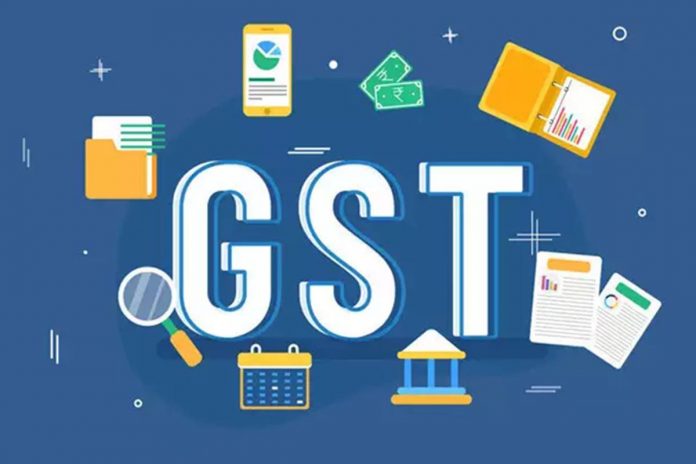This article is written by Raghav Singhal, pursuing a Diploma in Intellectual Property, Media and Entertainment Laws, from LawSikho. The article has been edited by Khushi Sharma (Trainee Associate, Blog iPleaders) and Vanshika Kapoor (Senior Managing Editor, Blog iPleaders).
Table of Contents
Introduction
Media and Entertainment is the most popular and ever-growing industry. The Media and Entertainment industry has been divided into many divisions that are linked into one vertical such as film, television, radio and print. New generation technology is acting as a stimulus in fading the old generation of Media and Entertainment. Combination of evolving generations persistently making the M&E sector boom in demand globally. Equivalently the trends in the very industry vary according to region and consumers making the vertical exclusive, by complementing the demand for entertainment worldwide.
Since ancient times, taxes have been a part of the living. We can not imagine humans living without taxes. We live in a world where we have to pay taxes in lieu of something as the taxes play a major role in the revenue collection to the government. There are mainly 2 types of taxation systems in India, one is Direct Taxation and other one is Indirect Taxation. The Media and Entertainment industry is covered under the head of Entertainment Tax in the Service Tax regime before 2017. The Indirect Taxation legislation covered cinema under the luxury tax and put it under the highest rate slab 28%. In this article we will analyze the aspects of Indirect Taxation i.e., Goods and Services Tax on the Media and Entertainment Industry.
What is goods and services tax?
Before 1-July-2017 we had many heads under the Indirect Taxation regime such as Service Tax, Wealth Tax, Excise Duty, VAT and much more. After the launch of GST in India it subsumes many different types of taxes and now we have One Tax One Nation.
Goods and Service Tax (GST) is a destination-based tax and is levied on the supply of goods and services. GST is a single tax that will be levied on the entire nation. Goods and Services Tax constitutes mainly 3 heads under which taxes are levied i.e CGST(Center Goods and Services Tax Act), SGST(State Goods and Services Tax Act), IGST(Integrated Goods and Services Tax Act ). IGST. There exist two types of business transaction (Intra-State) transaction and (Inter-State) transactions, intrastate transactions are those which occur in the particular state and Inter-state transactions are those which occur between two states.
Illustration
Let us take a situation where the dealer of chemicals who is in the business of supplying chemicals has supplied the goods from Uttar Pradesh to the dealer in Punjab worth Rs. 60,000. The rate of tax applicable is 18% consisting of only IGST.
In that case, the dealer will charge IGST of Rs.10,800. The revenue of 10,800/- will go to the Central Government.
The same chemical dealer sold the goods within the same state i.e. in Uttar Pradesh itself to a consumer in Uttar Pradesh worth Rs. 60,000. The GST rate on goods is 12%. This rate comprises CGST at 6% and SGST at 6%.
The supplier has to collect Rs.7,200 as Goods and Service Tax, Rs.3600 will go to the Central Government and Rs.3,600 will go to the Uttar Pradesh government since the sale is within the state.
The purpose of GST is as follows:
- To achieve the ideology of ‘One Nation, One Tax’.
- To subsume a majority of the indirect taxes in India.
- To eliminate the cascading effect of taxes.
- To curb tax evasion.
- To increase the taxpayer base.
- Online procedures for ease of doing business.
- An improved logistics and distribution system.
- To promote competitive pricing and increase consumption.
Pre GST era flow chart is mentioned but no flowchart has been added.
Impact of GST on the different industries in the media and entertainment industry
Exhibition of Movies
The exhibition of the movie is the retail branch of the film industry. It involves the public screening of the movies in theatres where the customers pay the money for the purpose of watching movies for their entertainment purpose.
| Pre-GST | GST |
| On the Sale of tickets: Entertainment tax was levied ranging from 15% to 110% | On Sale of tickets: here we have two slabs below Rs 100 18% GST is applicable and above Rs. 100 28% GST is leviable |
Food and Beverages at Theatres
| Pre-GST | GST |
| Here the tax is levied under 2 heads: VAT @20.5% (Assumed) and Service Tax @15% | Here In GST 18%or, 12% is levied according to the conditions prescribedSupply of Food and beverages are considered as restaurant Services and the tax applicability depends on the Air Condition Services if the Supply is done in AC premises then 18% is applied and in Non Ac premises then 12% is levied |
Film Distribution
| Pre-GST | GST |
| Copyright transfer for the exhibition of movies in Theatre: double Tax is imposed, VAT and Service Tax which creating a burden on the producers | Here transfer of copyrights is treated as the supply of services under GST and the rate of tax is 12% |
| Trademarks, Copyrights like Intellectual Property had been treated as goods and attracted State VAT | Here 2 rate slabs are: transfer of (IP) rights in respect of Software rate is 18% and 12% rate is leviable in respect of goods other than information technology software |
Services rendered by Artists and other technicians
| Pre-GST | GST |
| Taxability on Artist services levied @ 15% Service Tax on forward charge basis | Under GST @ 18% tax rate is applicable in the services rendered by the Artist on forward charge basisServices rendered by author, music composer, photographer, artist or the like by way of transfer or permitting the use. |
| 15% Service Tax is levied on the services by technicians like composers, photographers on Forward Charge basis. | Supply of services by an author, music composer, photographer, artist or the like by way of transfer or permitting the use of copyright attracts 18% GST on reverse charge basis (RCM) |
Sponsorship and Brand Promotion
| Pre-GST | GST |
| Liable to service tax @ 15% | Liable to GST @ 18% |
Amusement Parks
| Pre-GST | GST |
| State-specific Entertainment tax ranging from 15% to 110% (average of 30%) No VAT or Service Tax | GST at 18% |
Impact
After the emergence of all the different types of indirect taxes under the single head of GST, there is a sigh of relief to the consumers as the overall burden of different small taxes which was creating a cascading effect and was anytime borne directly or indirectly by the end under itself. Mostly the states that have heavy entertainment taxes are benefited but some of the states also persist that have very low rates even if compared to the GST, but if we take an average count, the implementation of GST has benefited the entire industry helping in growth with increased digitization at lower costs.
What is FCM & RCM
Forward Charge Mechanism (FCM) is a process in which the tax is charged in the Sale Invoice by the supplier and the same is collected from the purchaser and finally deposited to the government, this is also known as the simple method in this case mostly both the parties are registered.
Reverse Charge Mechanism (RCM) is the process in which the payment of tax is paid by the recipient. In this case, mostly the supplier of service is an unregistered person or the person is who is outside India which is automatically is out of the scope of GST, so on their behalf the recipient of service is liable to pay GST to the government on their behalf.
The mechanism of RCM can be clearly understood in the case of Udayan Cinema Pvt. Ltd. Case Number 44 of 2018, Order number 45/WBAAR/2018-2019 and ARN AD1911180006556.
Background
The Applicant intended to produce a feature film, a portion of which was planned to be shot at locations outside India. For this purpose, he was in the process of appointing CDI Virtual Films Inc. (hereinafter the CDIVF) as a Line Producer in Brazil.
Issues
- Whether he is liable to pay IGST on the reverse charge on the payments to be made to CDIVF and, if so, what should be the rate depending upon the classification of the service of a Line Producer.
- Whether the reimbursements made on an actual cost basis will also be subject to IGST.
Admissibility of Application
The questions raised are admissible for an advance ruling under section 97(2) (a), (b) & (e) of the GST Act, read with section 20(xviii) of the IGST Act, 2017.
The Applicant declared that the issues raised in the application are not pending nor decided in any proceedings under any provisions of the GST Act. The officer concerned from the revenue had raised no objection to the admissibility of the Application.
The Application is, therefore, admitted.
Analysis
The concept of reverse charge is laid depending upon the location of the recipient of service so the liability to pay IGST on the reverse charge on the payments to be made to CDIVF depends wholly upon the location of the recipient. The Applicant, a resident of India, will receive the service in Brazil, where it has no fixed establishments or a specific location at which the service is being supplied. The location of the recipient should, therefore, be the usual place of his residence in terms of section 2(14)(d) of the IGST Act, 2017. The recipient is, therefore, located in the taxable territory. Tax is, therefore, payable on RCM in terms of Sl. No. 1 of Notification No. 10/2017 – IGST (Rate) dated 28/06/2017, provided the transaction constitutes an inter-State supply within the meaning of section 7(4) of the IGST Act, 2017.
What are the advantages and disadvantages of gst in the context of media and entertainment

Advantages of GST
- Lease of Film/television content rights
Earlier, in the old regime of Indirect taxation there always remained confusion in the case of lease of film/ television content rights. A conflicting issue arose, whether the transaction of lease of film content will be considered as supply of goods or supply of services.
As in the old regime VAT will be applicable on supply of goods and on supply of services Service tax was levied so because of the non-clarity of the pattern mostly for the safer side both VAT and Service Tax was applicable and a burden of @21% (15% Service Tax & 6% VAT) in Maharashtra is levied.
After the implementation of GST, the supply of lease of Film content rights will be a service and will attract 12% GST Tax.
- Input Tax credit (ITC) for Distributors
Input Tax Credit is the main driving force and the hot topic of discussion in the GST. Input Tax Credit helps in the smooth running of the business. After the GST came into force the benefit of ITC will be claimed by the Film Distributors which is paid by the producers and according to the chain, continues such as the theatre owners will claim ITC of the GST paid by the distributors etc.
Disadvantages
- Non Availability of ITC
In GST, there are some transactions that are Blocked under the GST. There is a specific section in GST that states that ITC is not allowed in a certain inward supply of goods and services.
In the film industry, shooting in different locations at odd hours is a very basic thing and it is a very common practice of serving food and beverages while shooting to provide convenience to the actors and staff and other members of the crew and also the outdoor catering services. These are the additional costs to the production as in the GST regime under section 17(5)(b)(i) the ITC of such above-mentioned services are blocked and not ITC is allowed.
- States not entitled to grant tax exemption Status
When a film imparts knowledge or which gives a social message, in the old regime of Indirect Taxation it was at the discretion of the state to give exemption on the entertainment tax or to levy lower rates on the movie tickets. In the GST regime, this state power is abolished and the state has no power to tamper with the GST rates.
GST and world : a global scenario
India possesses the highest GST rate in the world. The maximum GST rate slab of 28% introduced by India is the highest among more than 160 countries across the world that have implemented GST. Argentina has the second-highest GST rate of 27%, whereas the rate stands at 20% in the UK, 20% in France and 7% in Singapore. To minimise tax evasion and also to stop the cascading effect of tax evasion in the economy over 160 countries across the globe had adopted the Goods and Services Tax regime.
France was the primary country to adopt this single tax system in 1954 and followed by Germany, Italy, Japan, South Korea. GST is one of the top initiatives taken by most countries for a structured and developed economy. India took years in implementation of GST than other countries in the world and finally in the year 2017 India also adopted GST regime A value-added tax levied on mainly goods and services provided or sold for domestic or household consumption is called Goods and Service Tax. GST provides revenue or income for the government in the growth procedure of the economy. The section of GST that is accumulated or collected from the consumers by the business or seller of the goods, is forwarded to the government. In some countries, Goods and Service Tax is also acknowledged as Value Added Tax.
GST in other countries
GST tax Rate in some countries
| Country | Implementing Year | Highest Tax rate |
| India | 2017 | 28% |
| Canada | 1991 | 5% |
| New Zealand | 1986 | 15% |
| Singapore | 1994 | 7% |
| Australia | 2000 | 10% |
| Brazil | 1984 | 17% |
| Malaysia | 2015 | 6% and varies |
GST in Canada
GST is now one of the major sources of revenue for the Canadian government. Despite huge opposition from both the political rivals and the public, the Conservative dominant House of Commons approximately 25 years ago had passed the GST bill. In the fiscal year 2013-14, the total amount of revenues constitutes 1.6 per cent of the total gross domestic product (GDP). The amount is projected to have a steady increase in the coming year.
The taxation regime of Canada is mainly carried out under the 3 schemes i.e. Federal GST, Joint federal and separate federal. Federal tax is a generally accepted tax system while joint federal runs on the basis of the synchronised behaviour of the economy and states and the last one is separate federal which only applies to Quebec as it is deemed as a quasi-independent province. The basic GST rate is 5% on the supplies of goods and services and in some regions, 15% sales tax is also imposed. From 1991, a Multi-level VAT structure was enforced on supplies of goods and services purchased in Canada. There are no such exemptions on goods and services from the ambit of GST, only a few prescribed groceries, residential rent, and medical services.
GST in Singapore
The introduction of GST is seen as a means to lower personal and corporate income tax rates while maintaining a steady revenue base for the government. GST in Singapore was introduced in 1994 as an indirect tax as it taxes expenditure.
Presently GST is charged at the rate of 7%. The GST Act is modelled off the UK VAT legislation and New Zealand GST legislation. The authority which collects, administers, assesses and enforces the payment of GST is acknowledged as The Inland Revenue Authority of Singapore (IRAS) which operates as an agent of the Singapore Government.
GST in Australia
GST in Australia is collected by the Supreme Authority as it is a federal tax and after amassing the tax it is further divided among the states without any disputes. The GST was introduced in 2000 with a tax rate of Rs 10% maintaining the consistency in the rates till date.
Australia’s GST is generally considered to be one of the more efficient types of taxes. After the implementation of GST, there is an elimination of inefficient taxes at the state level that impede labour mobility and allow for reductions in federal personal income taxes that would encourage increases in labour supply and saving. International organisations such as the International Monetary Fund (IMF) have recognised the implications of these efficiency differences, suggesting in 2010 that they would “welcome more reliance on consumption-based taxes in Australia.
There are certain products and services which are exempted from GST
Most basic foods, some education courses and some medical, health and care products and services are GST-free, often referred to as exempt from GST.
Conclusion
One Tax One Nation One Market is the main motto of the GST which proves to be a boon for the entire world. After the implementation of GST in India, the revenue collection has increased drastically, within these 4 years the government has gained maximum revenue. GST law is designed in such a way that helps in preventing tax evasion leaving no loophole for the fraudsters to evade taxes. Under GST there is a free flow of Input Tax Credit which aids in the smooth running of the business and gives relief to many sectors from the high rate of taxes charged on the goods and services.
However, if we go through some practical aspects there are many business transactions that are in need of clarification. Organizations will now have to gear up both in terms of IT infrastructure and business processes to embrace the full potential of the new tax regime which looks all set to become a reality very soon.
Media and Entertainment is an ever-changing industry that has become a need for everyone. But it has been seen that in all the tax regimes whether Pre- GST or Post GST the M&E sector was always placed in the highest tax slab. The government should see through it and also shift the tax slab of the M&E industry from Luxury Tax to the lower tax rate slab.
References
- https://www.wirc-icai.org/images/material/WIRC-Deloitte-presentation-GST-impact-ME-sector.pdf
- https://cleartax.in/s/media-entertainment-taxation-gst
- https://cleartax.in/s/gst-law-goods-and-services-tax
- https://www.gstzen.in/a/application-for-advance-ruling-cgst-act-section-97.html
- https://blog.saginfotech.com/gst-india-vs-foreign-gst
Students of Lawsikho courses regularly produce writing assignments and work on practical exercises as a part of their coursework and develop themselves in real-life practical skill.
LawSikho has created a telegram group for exchanging legal knowledge, referrals, and various opportunities. You can click on this link and join:
https://t.me/joinchat/J_0YrBa4IBSHdpuTfQO_sA
Follow us on Instagram and subscribe to our YouTube channel for more amazing legal content.











